Naejangsan Mountain Visitor Information Center (내장산 탐방안내소)
11.9 Km 5398 2024-04-07
1207, Naejangsan-ro, Jeongeup-si, Jeonbuk-do
+82-63-538-7874
Located within Naejangsan National Park, the Visitor Information Center was first opened in July 1998 to promote the public’s understanding of nature and national parks, and to provide enhanced park services.
The Center features models of the topography and cultural relics of the mountain, videos of local plants and animals, and a history gallery.
Naejangsa Temple (내장사)
12.3 Km 32471 2024-04-07
1253 Naejangsan-ro, Jeongeup-si, Jeonbuk-do
+82-63-538-8741
Naejangsa Temple, cradled within the stunning Naejangsan National Park, is believed to have been established in the year 636, within the Baekje Kingdom. Historically, the site once hosted about 50 large temple buildings. However, they were destroyed during foreign invasions of Korea and the Korean War. Most of the structures standing today were reconstructed later. The temple, along with Geumsansa Temple, stands as one of the emblematic temples of Jeonbuk State. Enveloped by the mountain peaks of Naejangsan, which encircle it like a screen, the temple offers breathtakingly beautiful scenery. This beauty is particularly outstanding during fall when the leaves put on a vivid display of autumn colors. Notable nearby attractions include Baegyangsa Temple, Bangjangsan Mountain, Jangseongho Lake, and Damyangho Lake. Among its significant cultural assets are the Naejangsa Joseon-dongjong bell, among others.
Naejangsan National Park (내장산국립공원)
12.4 Km 157600 2024-04-07
328, Naejanghoban-ro, Jeongeup-si, Jeonbuk-do
+82-63-538-7875
Naejangsan Mountain is a famous mountain in Jeollabuk-do, and the best mountain in Korea to view the fall foliage. Because of the bright autumn leaves that blanket Naejangsan Mountain in fall, the mountain is also referred to as Geumgang of Honam, referencing the beautiful Geumgangsan Mountain.
Inside the park, there are famous waterfalls, such as Dodeokpokpo Falls and Geumseonpokpo Falls, and temples such as Baegyangsa Temple and Naejangsa Temple. In addition, there are about 760 kinds of local plants, including those designated as Natural Monuments, and various wild animals living inside the park.
Naejangsan National Park is beautiful not only in fall, but also in spring when the azaleas and cherry blossoms bloom, in summer when the mountain turns green, and winter when the rock cliffs are covered with snow.
Jangseongho Tourist Area (장성호관광지)
12.6 Km 7107 2021-03-24
591-8, Baegyang-ro, Jangseong-gun, Jeollanam-do
+82-61-392-7248
Jangseongho Tourist Area is located south of Naejangsan National Park, in Jangseong, known as the hometown of Hong Gil-dong, a Korean Robin Hood. The lake was made by the damming of Hwangnyonggang River, and holds up to 89.7 million tons of water, filled with many freshwater fish species. In addition, the walking path along the 603-meter-long embankment attracts many tourists with beautiful views of the mountains and lake. Cruise ferries and motorboats also cross the lake. Nearby attractions include Ibamsan and Baegamsan Mountains, Namchanggyegok Valley, Baegyangsa and Naejangsa Temples, Gosanseowon Confucian Academy, Bangjangsan Recreational Forest, and more.
Myeonangjeong Pavilion (면앙정)
13.6 Km 5959 2020-04-27
382-11 Myeonangjeong-ro, Damyang-gun, Jeollanam-do
+82-61-380-2811
Myeonangjeong Pavilion is located on the slopes of Jebongsan Mountain in Damyang-gun. The pavilion was constructed in 1533 by Song Sun (1493-1583), who built it as a place for writing poems. After its construction, the pavilion served as a meeting place for scholars and intellectuals and was even frequented by Lee Hwang (1501-1570), a representative Confucian scholar who is pictured on the 1,000 won bill.
The roof of Myeonangjeong Pavilion was originally made of reeds, straw, grass and other materials which could not withstand the elements. After several repairs, the building was developed into the wooden structure that it is today.
From the back of the pavilion, you can see the mountain range and open wide fields; renowned scholars’ poems are engraved on the wooden panels that decorate the pavilion walls.
Okcheongol Hanjeongsik (옥천골한정식)
13.6 Km 21510 2024-04-18
78 Gyeongcheon 1-ro, Sunchang-eup, Sunchang-gun, Jeonbuk-do
Okcheongol Hanjeongsik is a traditional restaurant that opened in the 1990s, specializing in authentic Korean table d'hote. The signature dish is so bulgogi hanjeongsik (beef bulgogi table d'hote). It features beef and pork bulgogi grilled on a charcoal, along with grilled yellow croaker and over 20 side dishes, including soybean paste jjigae, all served on one table.
Yeongsangang River (영산강)
14.7 Km 8737 2020-05-19
Gaedongsingi-gil, Damyang-gun, Jeollanam-do
+82-61-380-2820
Yeongsangang River (136 kilometers) is the shortest of the four major rivers in Korea. The river starts from Yongchubong Peak (560m) located in Yong-myeon in Damyang, Jeollanam-do. It runs through Damyang, Gwangju, Naju, and Yeongam and eventually flows into the Yellow Sea in Mokpo through the estuary bank.
The river also faces some environmental challenges, including extreme weather events that cause flooding, leading to ecosystem loss and habitat degradation. In December 1981, a dam was built and the damage was significantly reduced. The government has also introduced the Four Major Rivers Restoration Project in 2009 with the objective of restoring the rivers while achieving regional development. Under this project, a significant amount of budget was allocated for resolving problems plaguing the Yeongsangang River.
Namchanggyegok Valley (남창계곡)
14.8 Km 17960 2021-07-27
Namchang-ro, Jangseong-gun, Jeollanam-do
+82-63-538-7875
Namchanggol Valley, located at the foot of Ibamsan Mountain with a x_height of about 654 meters, belongs to the southern part of Naejangsan National Park (Namchang District). It consists of six valleys, including Sanseong, Eunseon-dong, and Banseok-dong (Saejaegyegok Valley). Nearby there is the Chonnam National University training center and beautiful surrounding scenery. Despite being well-known, visitors can enjoy their time without being crowded making it a very good summer resort. Hermitages such as the famous Baegyangsa Temple, Yaksaam Rock, and Yeongcheongul Cave, Jangseongho Lake and Bija grove are nearby as well. In particular, Ibamsanseong Fortress located in the upper reaches of the valley is Pogoksiksanseong Fortress built during the Samhan Period and designated as National Historic Site No. 384.
The Namchang Valley Nature Observation Trail, which is about 730 meters long, is equipped with various information boards and experience facilities related to nature learning, making it a good place for ecological learning. The nature observation path has themes to provide visitors with a variety of attractions, and the long stretch of cedar forest is also a must-see. In autumn, the maple leaves from the maple trees fall into the valley water creating a stunning scenery.
Hoemunsan National Recreational Forest (국립 회문산자연휴양림)
15.3 Km 14580 2024-04-07
249, Ansim-gil, Sunchang-gun, Jeonbuk-do
+82-63-653-4779
Hoemunsan National Recreational Forest, located in Sunchang, Jeollabuk-do, opened in 1993 with a daily maximum limit of 500 people. There’s a waterfall next to the rock gate near the entrance of the forest and a suspension bridge further ahead. Above the suspension bridge is an observatory that provides visitors with a panoramic view of the area. The 5.5 kilometer path to the peak has various types of trees and flowers and also houses many different types of birds. The forest has many facilities including a water playground, exercise machines, volleyball court, pagoda, walking trails, and hiking trails.
Hoemunsan Mountain (회문산)
15.3 Km 9519 2024-04-07
249, Ansim-gil, Sunchang-gun, Jeonbuk-do
+82-63-653-4779
Hoemunsan Mountain (alt. 830 m) stands at the border of Imsil-gun, Sunchang-gun, and Jeongeup-si. It consists of three peaks — Hoemunbong, Janggunbong, and Gitdaebong Peaks — and stretches 8 kilometers from east to west and 5 kilometers from north to south. Because the Seomjingang River, flowing from Okjeongho Lake, surrounds Hoemunsan Mountain on two sides, the view from the peak is fascinating. There are many valleys popular for water play in the summer, drawing many visitors to the villages of Deokchi and Cheondam.
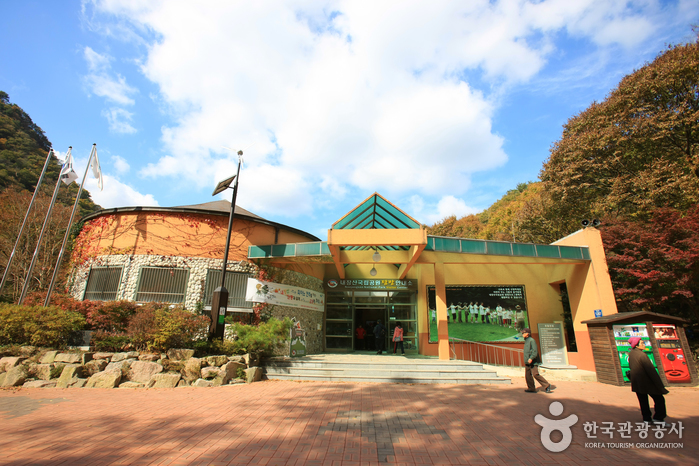

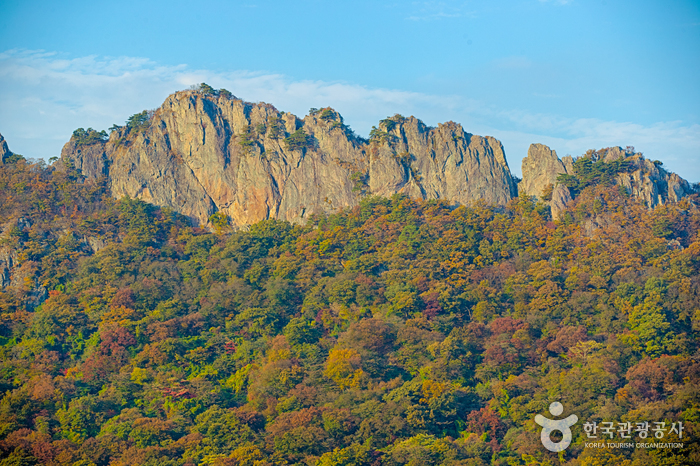
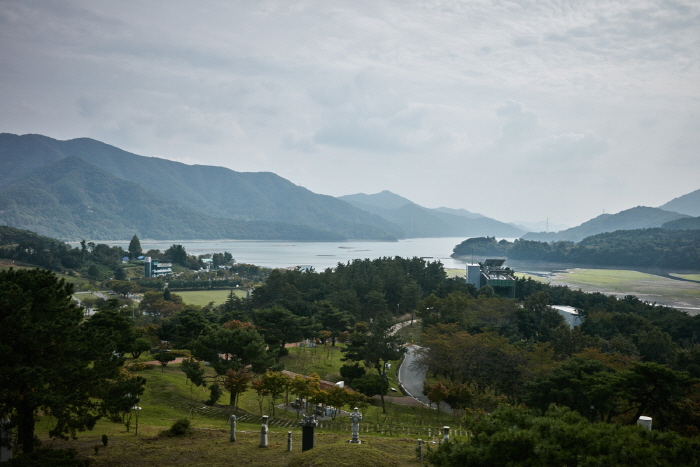
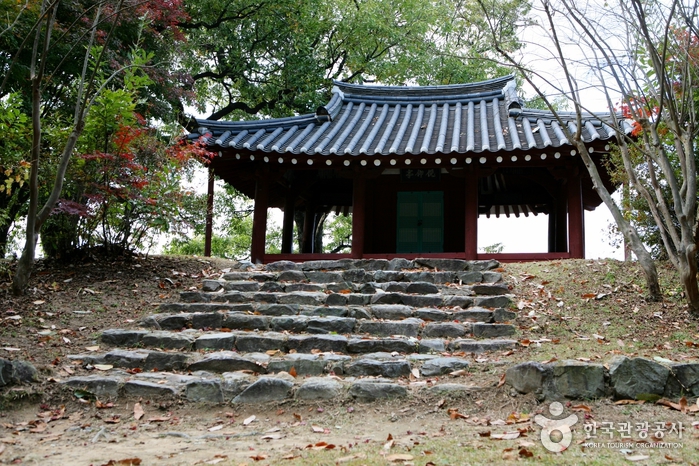
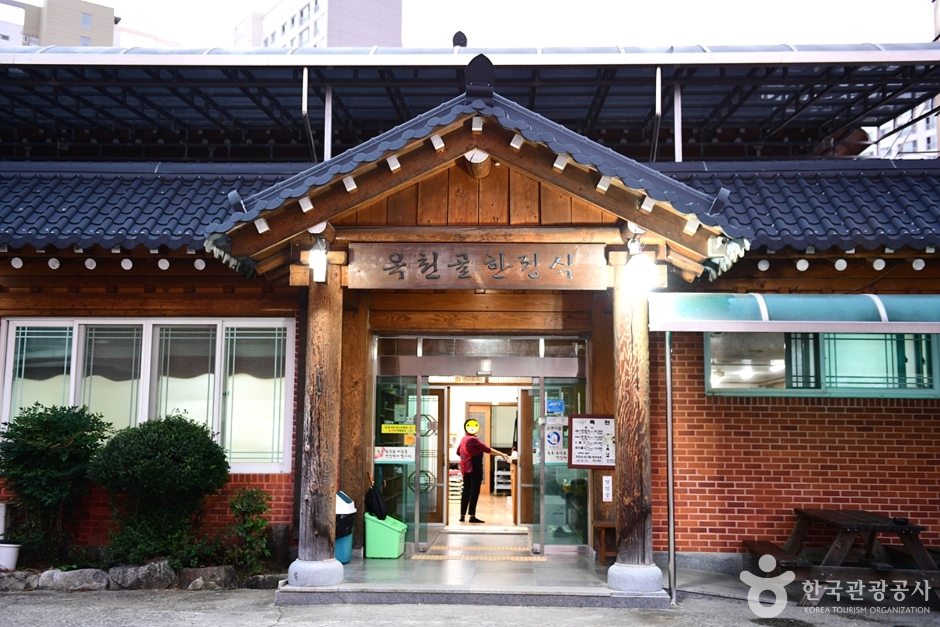
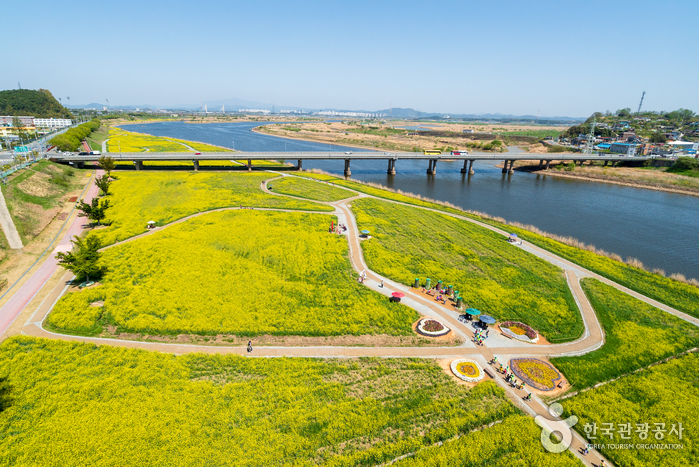
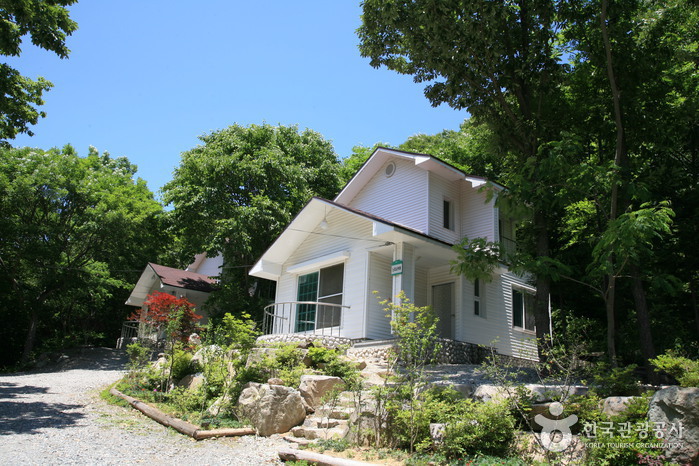
 English
English
 한국어
한국어 日本語
日本語 中文(简体)
中文(简体) Deutsch
Deutsch Français
Français Español
Español Русский
Русский